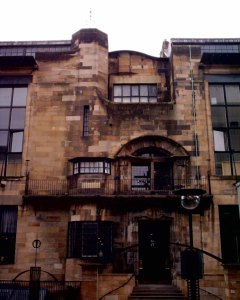
‘The Glasgow Miracle’ is a term that has been on the lips of critics and artists since at least 1996, when Swiss curator Hans-Ulrich Obrist first used it to describe Glasgow’s contemporary art scene. Despite the lack of a thriving art market, Glasgow has produced a number of highly successful and acclaimed artists, amongst whom are Turner prize winners Douglas Gordon, Martin Boyce, Susan Philipsz and Richard Wright.
‘The Glasgow Miracle’ is a contentious term – on the one hand, the word ‘miracle’ offended artists who felt that their success has been dismissed as a result of arbitrary forces rather than genuine hard work. ‘Miracle’ is, after all, a term denoting a one-off event; at the same time, even if short lived, it has influence over the generations to come. This contradiction ingrained in the word itself is present in the way it has been used ever since the conception of ‘The Glasgow Miracle’. Francis McKee, the current director of Centre for Contemporary Art in Glasgow, in an article printed in New York Times in 2012 argues that ‘Everyone has pretty much taken offence’ at the term. At the same time, the contentious term was treated as a springboard for a debate on the art scene in Glasgow, with McKee and Ross Sinclair heading a team of researchers whose goal was to catalogue the origins, history and international influence of Glasgow’s burgeoning art scene. ‘The Glasgow Miracle’ project aimed to sort through archives of the Third Eye Centre, a predecessor of the CCA.
According to ‘the Glasgow Miracle’ blog, much of the responsibility for the reinvigoration of the art scene in the 1970s and 1980s can be attributed to the Third Eye Centre and its founder, Glaswegian playwright and pianist Tom McGrath. It was his incessant need for experimentation and pushing the boundaries that allowed many memorable events to take place, such as Billy Connolly’s performance or the development of video art through McGrath’s connection with the Rotterdam Arts Foundation. Other writers point to the environmental art course at Glasgow School of Art led by David Harding as the thing that sparked ‘the Glasgow Miracle’. Above all else, Glasgow’s burgeoning art scene as we know it now had been shaped by the permissive attitude that the government in the 1970s and 1980s had towards grass-roots movements such as Third Eye Centre. Vacant buildings scattered around the city were easily available to artists and activists, with the Arts and Humanities Research Council investing into the renaissance of art in Glasgow at the time. Nowadays, we see what a huge change has affected the government’s policy on art and art funding. One example is Govanhill Baths which the city council had attempted to close down in 2001, but which, due to the protests from the representatives of local communities and artists, reopened as a community centre.
What appeared to be the norm in the 1970s and 1980s, today is treated as a miracle, ephemeral and irrational. However, the long string of names of Scottish artists associated with the Turner prize reads as a confirmation that miraculous things are still possible in Glasgow, which remains open to new possibilities and projects. It almost seems that the most surprising ‘miracle’ of all is the lack of contemporary art market in Scotland. Perhaps due to the tradition of shipbuilding and export of goods as the factors defining Glasgow in the eyes of the world, contemporary art is similarly ‘shipped off’ and sold to all the corners of the world, rather than adorning Scottish art galleries and private houses. Thus the term ‘the Glasgow miracle’ invariably points toward the commercial side of art; it’s a catchy phrase allowing the artists to advertise their works successfully (the Glasgow School of Art even offers a city walking tour, exploring the miracle and sights connected to it).
‘The Glasgow Miracle’ has been thoroughly deconstructed by critics and pieced back together to form a brand, advertising Glasgow as a tourist destination The term, with its commercial implications, seems to be nothing more than an eye-catching candy wrapper, concealing the amount of work that had been contributed to its production. It would be interesting to explore the impact of the term on the work of young generation of artists who grew up in the shadow of the famous Turner prize winners. One can only wonder what would happen if the newly opened Reid building carried a sign saying ‘The Glasgow Miracle’ instead of it’s colourful exclamation ‘Now Sing!’, designed by Glasgow-based Michael Stumpf.
Leave a Reply